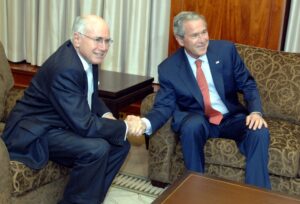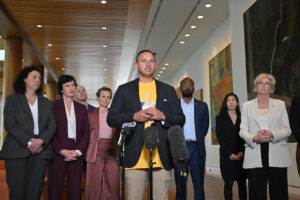Australia used to have very high protection rates for its manufacturing industries. Historically tariff quotas on motor vehicles meant that Australian car prices were double the prices for equivalents overseas.
Many other manufactured goods were sold at multiples of the prices in overseas markets. Australia like many other countries imposed very high tariffs on most imported consumer goods.
The end of high tariffs under the Hawke/Keating Government meant that, in principle, Australians now pay pretty well the world market price for most goods.
Click download to read the full article.
Related documents
Between the Lines Newsletter
The biggest stories and the best analysis from the team at the Australia Institute, delivered to your inbox every fortnight.
You might also like
Pots and kettles: Trump trades barbs with China over trade
The global economic outlook is “dim” according to a new report, driven by uncertainty over Trump’s economic and trade policies.
AUSFTA: A bad deal then. Even worse now.
Australian consumers paid a high price for John Howard’s determination to sign a ‘Free Trade Agreement’ with the US.
Parliament’s back, and crossbenchers and backbenchers are setting the agenda | Between the Lines
The Wrap with Bill Browne Conservative commentators predicted that Treasurer Jim Chalmers would use last week’s Productivity Roundtable as an excuse to pursue an ambitious economic reform agenda. Don’t threaten me with a good time. The Albanese Labor Government announced 10 “quick wins” like “accelerating” changes to environmental laws and Artificial Intelligence adoption in the public



